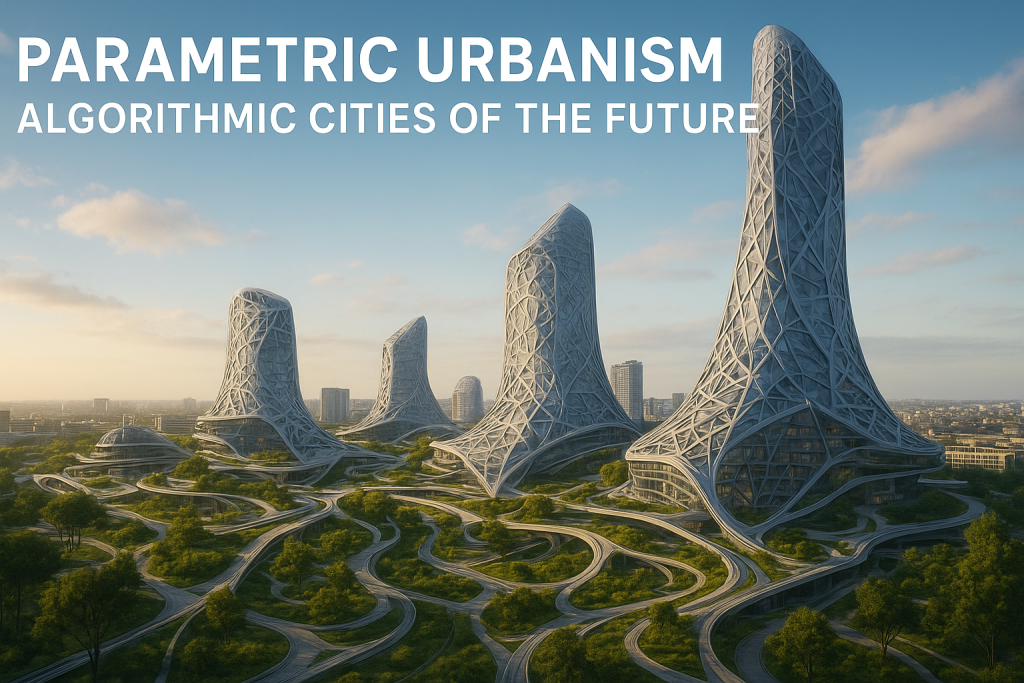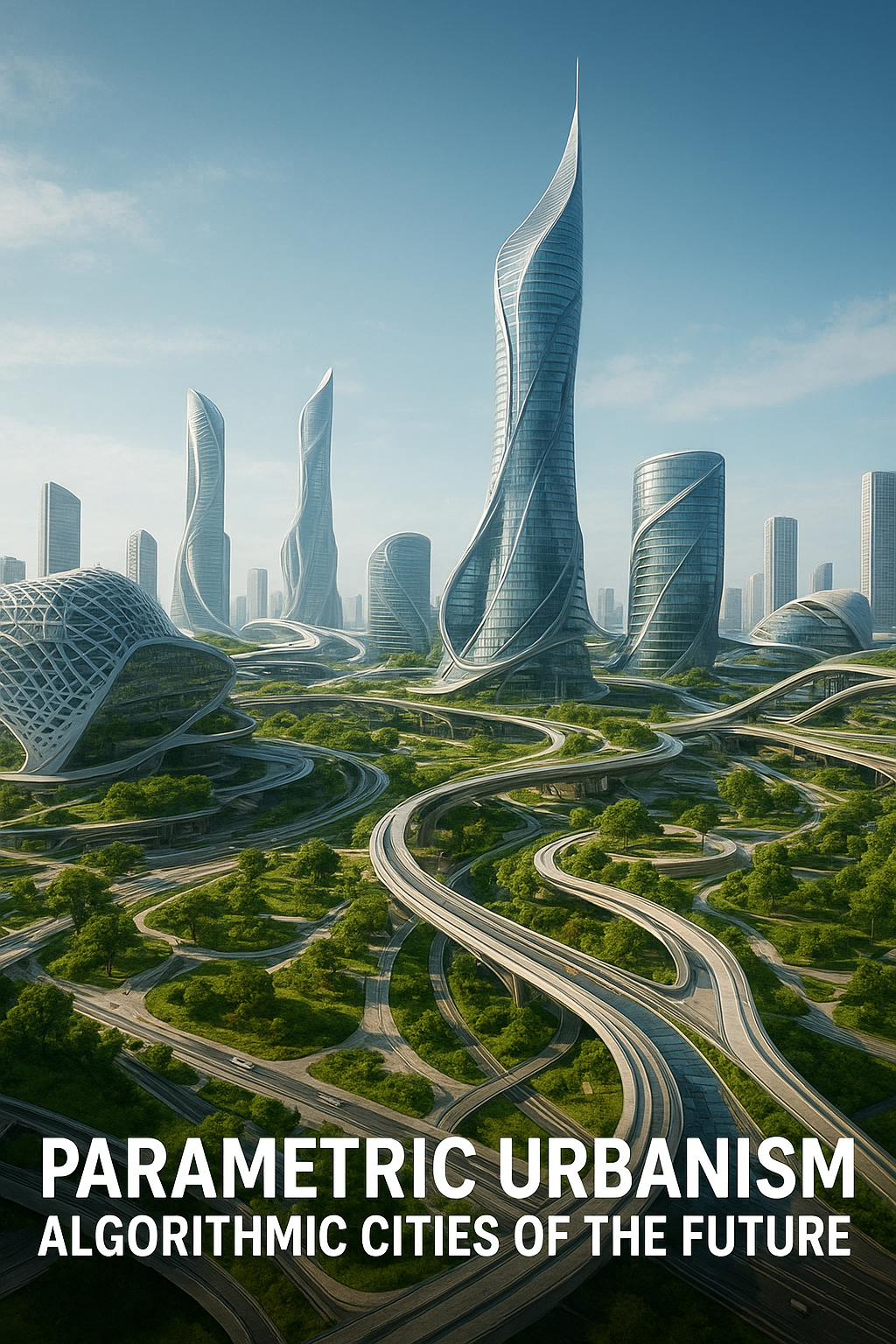Parametric Urbanism: Algorithmic Cities of the Future

Today’s cities are no longer shaped solely by human intuition or traditional blueprints. The rise of Parametric Urbanism marks a shift toward algorithmic and data-driven design. Derived from parametric architecture, this approach uses computational models and real-time data to generate adaptive, responsive, and efficient urban forms. In such environments, design becomes a collaboration between human intelligence, data, and algorithms — creating cities that can evolve and learn over time.
Parametric Design at the Urban Scale
In parametric architecture, form is defined by a series of interrelated parameters — light, wind, density, visibility, or circulation. When applied at the urban scale, these same relationships can govern how entire districts take shape.
For instance, in high-density cities where land is scarce, algorithms can optimize the layout of streets, building heights, and open spaces to improve natural ventilation, sunlight access, and social interaction.Tools like Grasshopper, Rhino Urban Analysis, and ESRI CityEngine empower designers to simulate urban growth based on logic and data. Instead of manually drawing streets and plots, designers define “rules of evolution,” allowing software to propose multiple spatial scenarios that fit both ecological and social constraints.
Algorithmic Planning and Data-Driven Cities
At the heart of parametric urbanism lies algorithmic planning — a method where urban decisions are informed by real-world data such as mobility patterns, temperature variations, and environmental metrics.
Cities like Copenhagen and Barcelona have embraced digital twins — virtual models that reflect the live conditions of the city. By feeding these models with data from sensors, designers can predict how changes in traffic, energy systems, or public spaces will impact the city before any construction begins.
This not only minimizes design errors but also fosters sustainable and human-centered urban development.
Real-World Examples in Europe
Europe has become a living laboratory for algorithmic and parametric approaches:
- Superilles (Superblocks), Barcelona – A parametric model that reorganizes street networks to prioritize pedestrians and reduce traffic.
- HafenCity, Hamburg – Parametric simulations helped optimize building heights and orientations for better daylight and wind flow.
- Smart Copenhagen – Uses environmental and mobility data to guide real-time urban decisions.
- Zürich Urban Mining Initiative – Applies data-based modeling to identify reusable materials in existing buildings.
These projects show how computational thinking is transforming urbanism from a static discipline into an adaptive system.
Opportunities and Challenges
Opportunities:
- Smarter decision-making: Algorithms can simulate thousands of design scenarios to find optimal urban forms.
- Sustainability: Data analysis enables more energy-efficient and climate-responsive designs.
- Citizen participation: Residents can contribute data to models, making planning more inclusive.
Challenges:
- Data complexity: Managing and integrating vast datasets requires advanced infrastructure.
- Algorithmic dependence: Excessive reliance on computation may overlook cultural or emotional values.
- Privacy concerns: Data collection raises questions of ownership and security.
Standardization gaps: Lack of unified frameworks for sharing urban data across platforms.
In Conclusion Parametric Urbanism bridges architecture, data science, and artificial intelligence. The cities of the future will no longer be static maps but living systems — continuously shaped by information and feedback.
By merging human creativity with algorithmic intelligence, we can design cities that are not only smarter and greener but also more humane.
Firms like Aron Studio, with their focus on digital design and cultural heritage, embody this synthesis — where form, data, and humanity coexist in a responsive urban landscape.
How Digital Fabrication and Parametric Design Are Shaping the Future of Architecture in Europe





